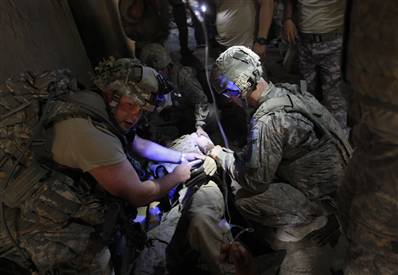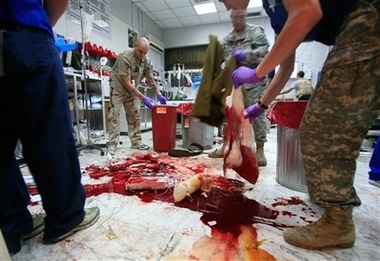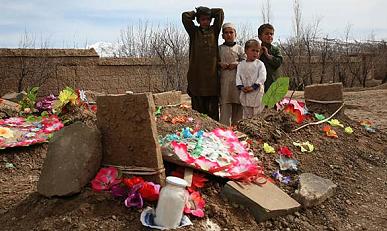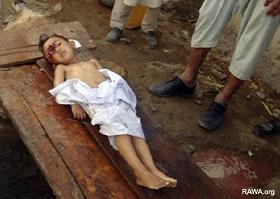American military casualties in Iraq and Afghanistan exceed 500,000 (Part 2 of 2)

A wounded U.S. soldier receives first aid inside a bunker in Bargematal,
Afghanistan, on Tuesday, Aug. 25, 2009. (Photo: Oleg Popov / Reuters)
[Part 1] "American soldiers, sailors, marines and airmen face the worst of two worlds. First, they continue to be supplied with cheap and substandard equipment (which has become a Pentagon tradition), while military contractors and war profiteers linked to Administration officials become rich. Second, when they are injured, their courage and actions are not recognized. Their injuries are many times not treated or acknowledged, and they are abandoned by the country they risked everything to protect. It is a shameful spectacle."
In Afghanistan, the light at the end of the tunnel is an exploding Taliban IED. The Pentagon has been given nine years to win its war and it has failed to do so. Last week the American public was given a status report by Secretary of Defense Robert Gates, who told Time Magazine that he is “pretty confident” that in six months the U.S. military will have made “sufficient progress” in the war.
This vague and hardly inspiring characterization (in which the Secretary commits to nothing) sets the stage for December 2010, at which time the military will cherry-pick positive news, as it minimalizes the bad news. The resulting concoction will be trumpeted as “progress.”
In order to continue to prosecute its lackluster war efforts and to deflect criticism regarding the competence of the military’s general officer corps, the Pentagon long ago realized that casualty rates had to be kept low. As they did not remain low, the statistics were adjusted. The procedure is simple. The Pentagon does not count 95% of the injured soldiers, sailors, marines and airmen as casualties. “Fudging the numbers” was adopted as the solution. All that matters is that Congress continues to fund the Pentagon’s wars.






























